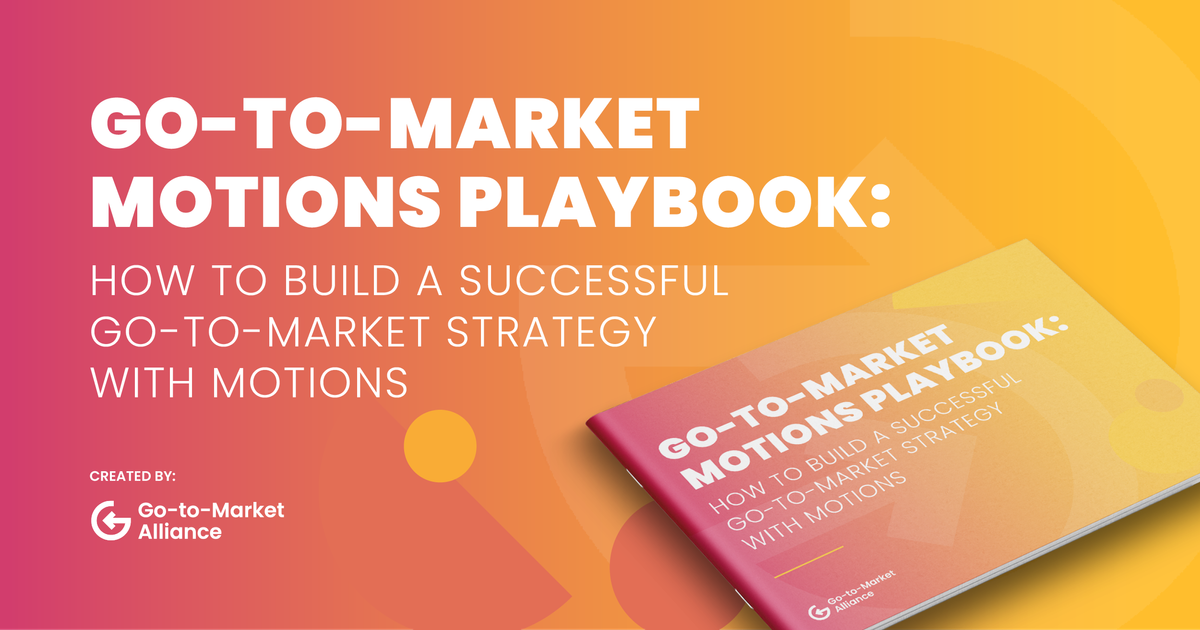Creating a clear, concise, and compelling value proposition is perhaps the most critical component of your go-to-market strategy. Yet, it's often treated as an afterthought.
Without a well-developed value proposition, your marketing materials and product messaging risk contradicting each other or failing to hit the target audience's needs. This can seriously slow turnover recruitment and negatively impact product-market fit. In contrast, a clearly articulated value proposition provides strategic direction for all go-to-market initiatives.
In this post, we’ll discuss why nailing your unique value proposition (UVP) should come before all other aspects of product launch planning. I'll also share frameworks to help define and convey value and provide examples of best-in-class value propositions from today's top companies.

Why your value proposition matters
What do Nike, Apple and Netflix all have in common? Sure, they’re all incredibly strong brands known for great products. But they’ve also nailed articulating the core value they provide.
Let’s start by clarifying what a value proposition actually is:
It’s a statement that clearly communicates the key benefits a customer gets from your product or service - formatted to align with their needs and convey why you're distinctly better than alternatives.
While branding builds an emotional connection over time through experiences, a value proposition makes a rational appeal that prompts a customer to engage right from the initial contact.
Getting this wrong can seriously damage your business’s ability to acquire and onboard the right customers. Fixing it after launch often requires redoing everything tied to a weak value proposition - from messaging and positioning to pricing and features.
So, establish the value proposition first, whether you're creating marketing materials, crafting a startup pitch deck, or mapping pricing tiers.
Frameworks to define And communicate value
While coming up with a compelling value proposition can seem tricky, several proven frameworks make this process more manageable.
Here are two I’d suggest applying early on:
Jobs-To-Be-Done Framework
Clayton Christensen pioneered the Jobs-To-Be-Done framework to shift focus from product attributes to the underlying jobs customers aim to get done. Here are some steps to apply it:
- Job - Identify the functional, social, and emotional jobs customers need to get done
- Obstacles - Call out difficulties and barriers getting in the way of making progress on those jobs
- Success - Define what success looks like for customers as they aim to make progress.
Articulating these jobs-related elements in relation to your product is key. You’re selling outcomes, not attributes!
For example, here’s an example ‘Jobs-To-Be-Done’ summary for Slack:
Slack helps modern teams communicate and collaborate more efficiently by providing a user-friendly platform to access messages, tools, and files anytime, anywhere – eliminating the hassle of email clutter and fragmentation across multiple tools.
Value Proposition Canvas
The Value Proposition Canvas by Alex Osterwalder is another strategic framework to map product value. Follow these steps:
- Customer Profile - Map target customer segments and underserved needs
- Value Map - Call out products and services that address those needs and provide value
- Fit - Evaluate the fit between the value map and the customer profile

Visually mapping the connections between target customers and the areas where you uniquely deliver value is extremely helpful.
This forces you to make those value-driven appeal points explicit - rather than assuming what a customer may inherently understand. Essentially, this framework provides a systematic way for you to convey a clear value prop that cuts through the noise.
Aligning value and positioning to product-market fit
With frameworks clarifying the core value delivered, integrating this into a positioning statement is the next step.
A value proposition blends into an effective positioning statement like this one from Nest:
“Nest Learning Thermostat is an intelligent home thermostat that learns your habits to optimize heating and cooling.”
Note how it calls outs:
- Product - Nest Learning Thermostat
- Category - intelligent home thermostat
- Key benefit - learns your habits to optimize heating and cooling
Getting your positioning right means finding that sweet spot intersecting product capabilities and target market needs. Constantly testing whether you’ve achieved product-market fit early on minimizes the risk of making significant pivots after scaling your go-to-market efforts.
Crafting compelling value proposition statements
With frameworks setting you up and positioning defined, it’s time to compose value proposition statements that guide all downstream messaging and content.
Here are five proven tips for crafting high-converting value propositions:
1. Lead with the most relevant value
Prioritize leading with the #1 benefit that matters most to customers - rather than trying to cram every advantage in one statement.
HubSpot nails this in their simple but compelling positioning statement:
“HubSpot CRM helps growing companies organize, track, and grow their pipeline with free CRM.”
Notice what they don’t say here. No mention of specific features like email integration, contact management, reporting dashboards, and so on. While important, none of those details connect as strongly with their mid-market target customers as “free CRM” does up front.

2. Speak directly to the customer
Use "you" focused language in value proposition statements whenever possible. While obvious, this customer-centric approach is still commonly overlooked by founders and marketers alike.
This value proposition from Evernote gets it right:
"Evernote helps you capture and prioritize ideas, projects, and experiences so you can stay focused and accomplish more."
The customer doesn't care about the intricate details of your product's architecture or algorithms. They care about how you will make their life noticeably better, easier, and more productive.

Customer-centric language that speaks directly to the user helps reinforce this critical point. Positioning the value in a "you-focused" way ensures the proposition is framed by the customer's perspective and desires, rather than the company's internal view.
3. Quantify value when possible
While sometimes difficult early on, adding quantified details reinforces the value delivered.
Numbers act as “proof points” that what you claim in the value proposition adds up. Below is an example from Moz:
“Moz Local helps brick-and-mortar businesses manage online listings and reputation across the web - resulting in a 20% higher click-through rate on average.”
Notice how the 20% higher CTR claim quantifies the expected improvement. Citing specific metrics and data points makes the value proposition more credible and tangible. Quantifying the impact puts a stake in the ground rather than making vague promises, demonstrating you can deliver measurable results.
4. Differentiate from alternatives
Calling out how you differentiate from competitors strengthens the positioning statement. As in, highlighting your unique advantages makes it crystal clear why customers should make the switch.
For example, here is how Spotify subtly sets up its value proposition versus alternatives:
“Spotify offers an unmatched music experience with a freemium model that allows free and unlimited skips—unlike Apple Music or Pandora.”
This example is brilliant because it doesn't just state a feature difference but ties it directly to Spotify's superior user experience. By laser-focusing on this specific point of differentiation, Spotify communicates volumes about being the most user-friendly, flexible streaming service.
5. Keep it concise
Resist cramming every feature or capability into one value proposition statement. Being concise improves clarity.
Uber’s to-the-point value proposition exemplifies brevity done right:
“Uber provides reliable rides in minutes across over 10,000 cities globally.”
Notice no mention of specific car types, price estimates, driver profiles, safety, payments and other details. Just the two factors that matter most to riders - reliability and availability where and when needed.
Examples of best-in-class value propositions
To pull all this together, let's look at a few real-world examples of stellar value propositions across software, consumer and other verticals:
Slack - Slack brings all your communication together in one place. It's real-time messaging, archiving and search for modern teams.
Square - Square helps businesses manage payments, inventory, locations, employees, and more – all in one integrated system.
Red Bull - Red Bull gives you wings, energizing body and mind.
Amazon Prime - Amazon Prime guarantees fast, free delivery on over 100 million products along with unlimited streaming of movies and TV shows.
GoPro - GoPro enables people to self-capture immersive, engaging footage of life’s most enjoyable moments.
Salesforce - Salesforce provides cloud customer relationship management (CRM) solutions to help companies connect with current customers and find new ones.
What makes these examples stand out is how they immediately communicate clearly who each brand is for and the core value they provide better than alternatives.
This then serves as the foundation for all downstream go-to-market planning - from branding guidelines to pricing models and more.
Go forth and craft compelling value propositions!
I hope this post has reinforced why clearly defining and articulating your product's unique value proposition is a prerequisite for effectively marketing your solution.
Rushing into flashy marketing campaigns or complex pricing tier configurations without an ironclad value proposition risks major misalignment later on.
Instead, leverage frameworks like the ones we covered (Jobs-to-be-Done and the Value Proposition Canvas) upfront in strategic planning. Evaluate product-market fit continuously before finalizing positioning. And craft value proposition statements that speak directly to what your ideal customer cares most about.
Then, pour that value proposition thinking into everything from your pitch deck to pricing pages and ad campaigns.
This will ensure complete alignment on the why behind your solution. And ultimately pinpoint the right customers to build long-term relationships with rather than short-term transactions.





